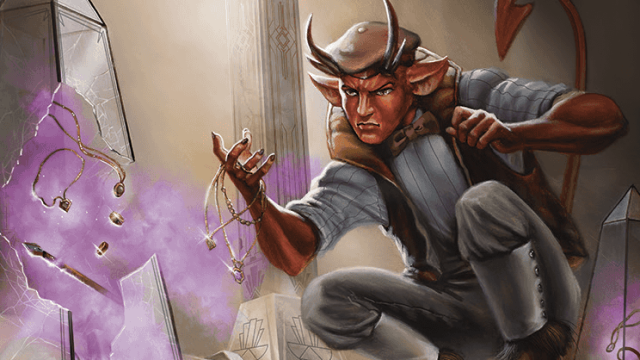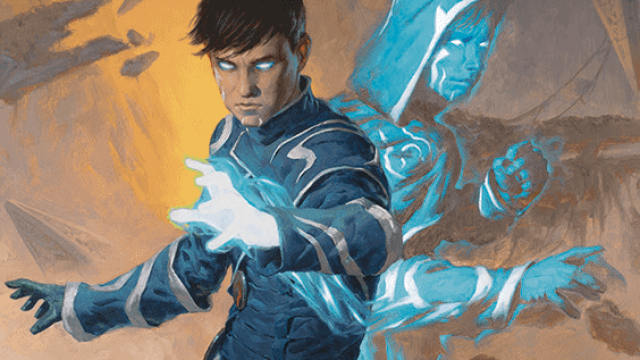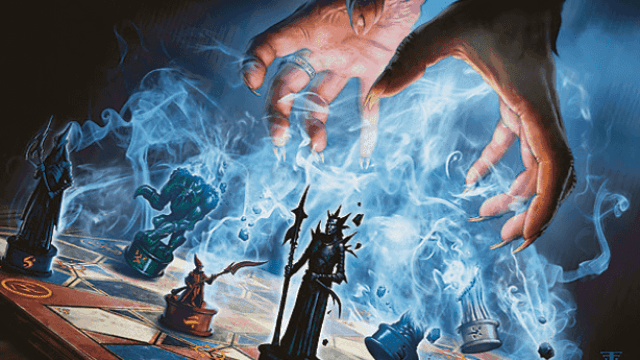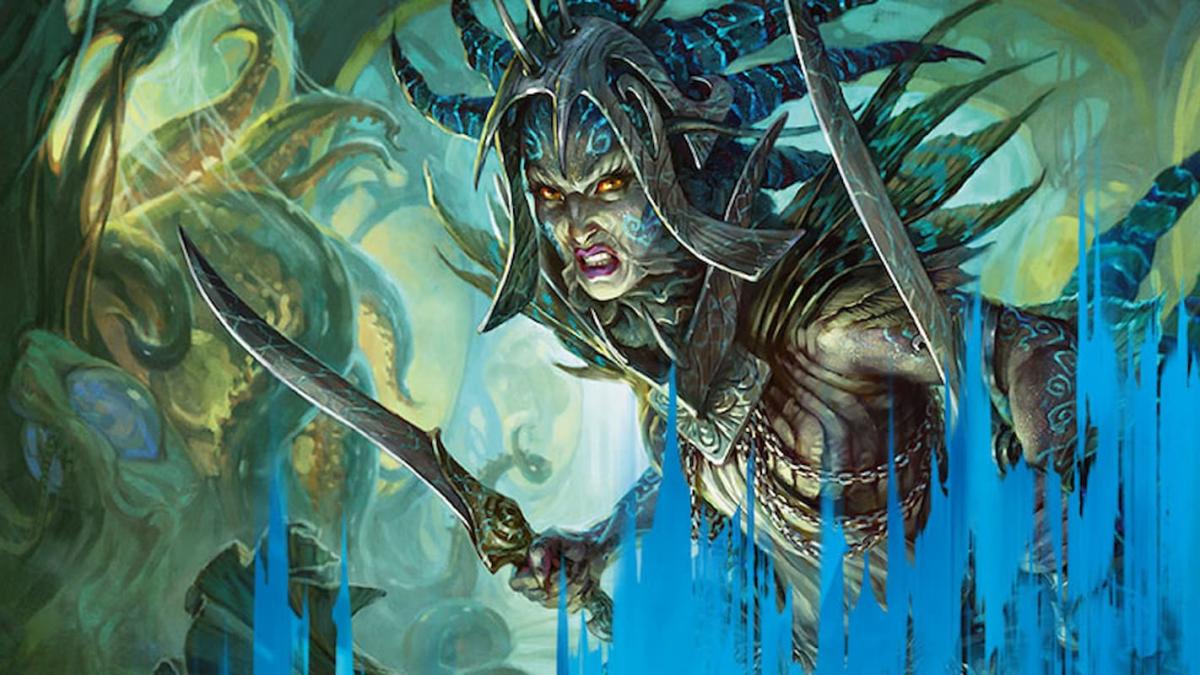Sorcerers are the spellcasters most comfortable with magic in Dungeons and Dragons 5E. As a result, they are able to use Metamagic to alter their magic, potentially turning spells into something completely devastating. Since you can only get four Metamagic options in 5E, you should know what each one is good at and how potent each option can be.
Metamagic is a mechanic unlocked at level three of Sorcerer. This ability allows the Sorcerer to spend a number of Sorcery Points when casting a spell to alter some properties of the spell. This can be something as simple as boosting the damage of the magic to changing what action it takes to cast.
The best Sorcerer Metamagic options in 5E ranked
The ranking of each Metamagic option is based on how useful it is for a generic Sorcerer in standard fights. While some Sorcerers might prefer different Metamagics to better use their subclass or spell types, most will follow this priority list when learning their Metamagic.
10. Subtle Spell

Subtle Spell is a fascinating Metamagic. For one sorcery point, you can cast any spell without somatic or verbal components. This means that no matter the situation, you can access magic. This includes under spells like Silence.
Subtle Spell is very neat in an intrigue campaign. Since you make no signs of casting, you can simply create a spell—like a Major Illusion—without anybody knowing it was you. That can lead to very impressive combat situations.
However, in a standard campaign, Subtle Spell counters so few effects. Realistically, you’re only getting around things that stop you from speaking or moving your arms. And those effects are, sadly, too rare for Subtle Spell to be one of your four choices. If only they came up more often.
9. Careful Spell
Careful Spell allows you to choose your Charisma modifier in targets which automatically succeed at the saving throw of your spell at the cost of one sorcery point. This Metamagic is particularly enticing for blaster casters.
There are a few problems with Careful Spell. First of all, it’s an ineffective solution. If you want to dump a Fireball on your party, then giving them auto-success on the saving throw isn’t bad. But it’ll usually only save a few points of damage. You’re still going to deal half damage with most saving throws. This is more effective on spells like Hypnotic Pattern, which fascinate creatures unless they save.
However, Sorcerers are so much more than just Fireball spam machines. Even if they don’t have the spells known of a Cleric or Wizard, crowded situations can be worked around with alternative damage options or through simple crowd control that only affects enemies.
This isn’t an intolerable option and can solve gummy fights. But other Metamagic options better smooth out your gameplan.
8. Empowered Spell

Empowered Spell allows the caster to reroll damage dice of a spell, up to your Charisma modifier, at the cost of one sorcery point. This usually means rerolling up to five dice. In addition, a spell can use Empowered Spell and another Metamagic.
Empowered Spell is the ultimate “feel-bad remover” for magic users. If you have ever had the unfortunate experience of rolling the 10-damage Fireball—somewhere between four and five ones on a Fireball, for instance—then you might think that Empowered Spell is very good.
And, for what it’s worth, this Metamagic can be a lifesaver. By rerolling a ton of ones into higher damage, you have the opportunity to save a potentially disastrous spell.
However, planning around rolling a high number of ones can be a major fallacy. And this spell doesn’t guarantee higher rolls, either. You just get to reroll those dice. So, you could still roll ones or twos on that terrible Fireball.
It’s not bad, but planning around unlucky failure usually isn’t worth it in 5E. You have other Metamagic choices that can further ruin someone’s day.
7. Transmuted Spell
Transmuted Spell allows you to, at the cost of one sorcery point, change the damage of a spell from one type to another. Specifically, a spell that deals acid, cold, fire, lightning, poison, or thunder damage can instead do another type from that list.
This is a simple spell but offers some utility. A Draconic Sorcerer, for instance, would kill for something like a Cold Fireball. Now, they can make one.
This is realistically only good for general Sorcerers for two reasons—targeting vulnerabilities and dodging immunities. If you have a read on something like a Red Dragon resisting fire damage, you can transmute a high-damage spell like Wall of Fire to instead deal poison damage. Or, if you roll a check and learn that a Hag is weak to acid damage, you can instead melt them with an acidic Cone of Cold.
This is technically more situational than Empowered Spell but replaces trying to solve bad rolls with good information and the chance to double damage instead of rerolling singular dice.
A potent spell with a few upsides, but requires good game sense to use well. Or a really good Ranger that knows everything about every monster.
6. Extended Spell

Extended Spell doubles the duration of a spell effect at the cost of one sorcery point.
This effect sounds useful, but it is difficult to make strong consistently. The most prevalent way to show this effect’s strength is to cast a buff that lasts one minute, such as Haste, and double it to two minutes. This means it is active for 20 rounds, potentially making it last two combats. Especially if your group rushes.
In this best-case scenario, Extended Spell functions like you cast a spell for free. Spells that last one minute and take concentration include some of the strongest buffs in the game, like Fly, as well as some devastating debuffs, like Dominate Person.
There are some headaches, though. For spells that last 10 minutes or longer, doubling duration is hard to justify. It’s also hard to track; 200 rounds is just a long time to make sure you know a spell is active. And if anyone needs to take a short rest? Your Extended Spell is basically shut down.
5. Seeking Spell
Theoretically, this bonus should be relatively impactful. At the cost of two sorcery points, the Seeking Spell Metamagic allows the Sorcerer to roll twice for the attack roll after you miss the attack and even with advantage or disadvantage.
There’s just one minor problem. Of the 220 spells on the Sorcerer’s list, 18 of them have an attack roll involved. That’s 10 percent of the list. And four of those are cantrips—not exactly something you’d want to spend two sorcery points to reroll.
This is still a very strong cantrip for those specific spell options. Spells like Crown of Stars or Blade of Disaster benefit a lot from rerolls due to their high damage rolls. And it’s not all damage, either. Plane Shift, for instance, is a great use of a reroll, allowing you to almost guarantee that you can send someone to another plane. Missing with spells like these feels terrible
However, the extremely limited list of spells that it’s effective with and the spells usually just dealing moderate damage makes Seeking Spell hard to justify. Try it out if you want to invest in attack rolls, but be ready to swap it at higher levels when attack roll spells become less frequent.
4. Distant Spell

Distant Spell doubles the range of a spell for one sorcery point, or improves a “touch” range spell to 30 feet. This allows spells like Fireball to have 300 feet of range or spells like Plane Shift to gain a 30-foot range.
Distant Spell is universally useful, as most spells have at least some range. This Metamagic option only really fails to work on “self” range spells.
However, Distant Spell runs into the minor problem that most spells have a large enough range to cover most combat encounters. 60 feet is the most common range of magic and that covers 12 squares. Encounters that go beyond that are rare. So, a Move into a spell cast will be more than enough in most situations.
But when this isn’t the case, Distant Spell becomes significantly more enticing. You’re usually getting, at minimum, two move actions worth of speed. That can be very nice. And improving a Touch spell, like Vampiric Touch, to 30 feet is much more manageable. Keeping your Sorcerer behind a Paladin tends to be a good idea.
3. Quickened Spell
Quickened Spell, at the cost of two sorcery points, allows the Sorcerer to cast a spell as a Bonus Action. This allows for incredibly effective turns for damage.
In DnD 5E, you cannot cast a spell as an action and a bonus action. This is different from how BG3 handles things. So, there can’t be double Fireball turns with this metamagic.
Even with this caveat, Quickened Spell is incredible. The Mind Sliver cantrip can reduce saving throws on a target, for instance, allowing a Quickened Hold Monster to land more consistently. Even turns of Disintegrate plus a Fire Bolt can raise damage fairly significantly.
It’s also great for emergency situations. For example, if you need to Disengage from an anti-mage, you can still have a very solid turn through Quickened Spell.
2. Twinned Spell

Twinned Spell is a variable Metamagic, costing sorcery points equal to spell level. Then, you get to cast a copy of a single-target spell on another target. Both spells use the same concentration.
Twinned Spell is a weird metamagic choice, but extremely powerful. The power comes in due to the fact that you’re casting two spells with one action and only spending one spell slot. Efficient turns like Twinned Polymorph can devastate enemy forces. Twinned Fly or Haste can buff two members of your team at a time, ensuring everyone performs at their best.
Twinned Spell does have some restrictions. Mainly, the spell must only target one creature at the level that it’s cast at. No Twinned Spell for a level five Hold Person, for example. You can do it if it’s a level two Hold Person since that spell only targets one creature.
Because of this, it’s usually best to find specific spells at spell levels that make use of this effect. Polymorph, mentioned above, is a fantastic example. As is Raulothim’s Psychic Lance.
It’s even strong mathematically. A spell typically costs about 1.5 times its level in sorcery points. Twinned just cost a hard number equal to its level, making things nice and cheap. Twinned Spell also works on level six and higher spells, something that Creating Spell Slots doesn’t allow.
This is a very strong spell that every Sorcerer should at least consider.
1. Heightened Spell
The strongest Metamagic option for Sorcerer in 5E is Heightened Spell. This Metamagic, at the cost of three sorcery points, gives your target disadvantage on their saving throw.
This is everything for a Sorcerer. Forcing your foe to roll twice and take the lower result on options like Hold Monster or Banishment can be fight-saving. Even one turn where a monster doesn’t get to crush you and your party is worth fighting for.
Three sorcery points might sound like a lot. However, consider it as though you cast a second spell to stop a monster from killing your party. If thought like that, this is three sorcery points for an extra copy of any spell in the game and an extra action to cast it.
Ensuring that your spells land is a frustrating part of playing any magic user, and the Sorcerer has a button to make sure it all works. Bards and Warlocks would kill for a similar effect, but the Metamagic Adept feat keeps it only in a Sorcerer’s hands.












Published: Oct 15, 2023 12:33 am